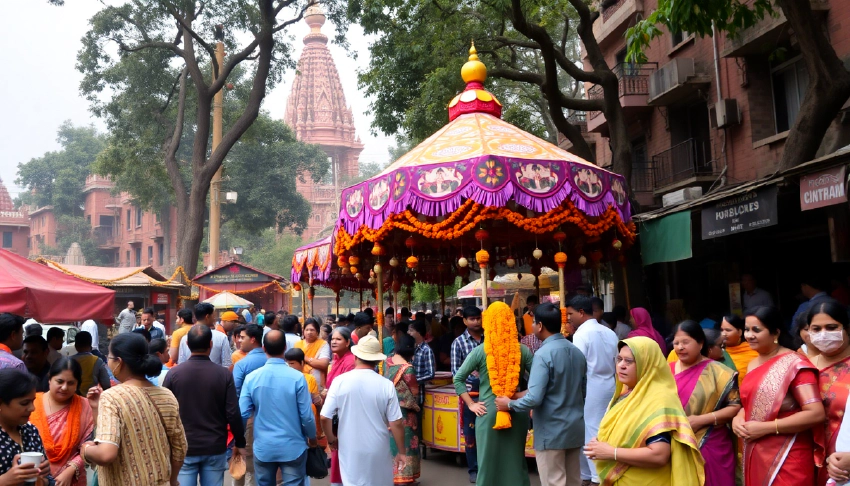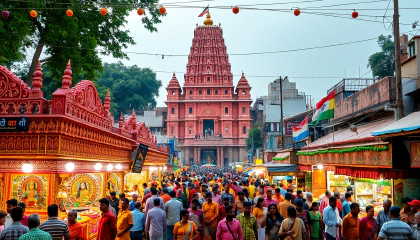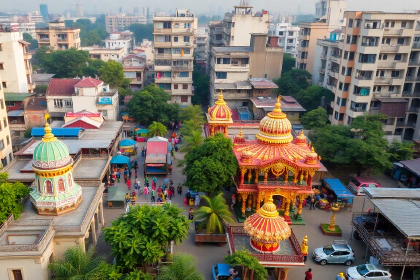
Chittaranjan Park: Delhi's Bengali Cultural Haven
The Rich Bengali Heritage of Chittaranjan Park: A Cultural Oasis in Delhi
Nestled in the heart of South Delhi, Chittaranjan Park (CR Park) stands as a vibrant testament to the resilience and cultural pride of the Bengali community. This unique neighborhood, often dubbed “Little Kolkata,” has evolved from its humble beginnings as a refugee settlement to become a thriving cultural hub that attracts visitors from across the city and beyond. In this article, we’ll explore the fascinating history, cultural significance, and modern-day charm of CR Park, uncovering the layers of Bengali heritage that make this enclave a true gem in Delhi’s urban tapestry.
The Historical Roots of Chittaranjan Park
From Refugee Settlement to Cultural Haven
CR Park’s story begins in the aftermath of India’s partition, when thousands of Bengali refugees from East Pakistan (now Bangladesh) sought a new home in Delhi. In 1954, the East Pakistan Displaced Persons Association was formed, advocating for a dedicated settlement for these displaced families.
The Birth of a New Community
In the 1960s, the Indian government allocated land in what was then a barren area of South Delhi for the establishment of the East Pakistan Displaced Persons (EPDP) Colony. This rocky terrain would soon transform into a thriving neighborhood, with approximately 2,000 plots distributed among eligible families.
A Name with Meaning
Initially known as EPDP Colony and later Purbachal, the area was eventually renamed Chittaranjan Park in honor of the renowned Bengali nationalist leader Chittaranjan Das. This name change in the 1980s solidified the community’s connection to its Bengali roots and set the stage for CR Park’s evolution into a cultural landmark.
Cultural Landmarks and Community Spaces
Temples as Cultural Anchors
At the heart of CR Park’s cultural landscape is the imposing Kali Mandir, a focal point for religious and cultural activities. This temple complex not only serves as a place of worship but also hosts numerous events throughout the year, bringing the community together.
Markets: A Slice of Bengal in Delhi
CR Park boasts four main markets, each with its own unique character. These bustling hubs offer everything from fresh fish and vegetables to traditional Bengali sweets and handicrafts. The markets serve as social spaces where residents gather, shop, and engage in the beloved Bengali pastime of “adda” (informal conversations).
Educational and Cultural Institutions
The Raisina Bengali School, established in the 1970s, plays a crucial role in preserving Bengali language and culture among the younger generation. Cultural organizations like the Chittaranjan Park Bangiya Samaj organize events, performances, and workshops that keep Bengali traditions alive in the heart of Delhi.
Festivals and Celebrations: The Soul of CR Park
Durga Puja: A Spectacular Showcase
CR Park truly comes alive during Durga Puja, the most important festival in the Bengali calendar. The neighborhood transforms into a mini-Kolkata, with elaborate pandals (temporary structures housing the deity), cultural performances, and food stalls drawing visitors from across Delhi and beyond.
Year-Round Cultural Calendar
Beyond Durga Puja, CR Park celebrates a host of other Bengali festivals and cultural events throughout the year. From Saraswati Puja and Kali Puja to literary meets and music concerts, there’s always something happening in this vibrant community.
Culinary Delights
Food plays a central role in Bengali culture, and CR Park is a paradise for lovers of Bengali cuisine. From street food stalls serving up hot kathi rolls and phuchka to restaurants offering authentic Bengali thalis, the neighborhood is a gastronomic delight that keeps culinary traditions alive.
CR Park in Popular Culture
Bollywood’s Little Bengal
CR Park’s unique character has caught the attention of filmmakers, with several Bollywood movies featuring the neighborhood as a backdrop. Films like “Vicky Donor” (2012) and “Piku” (2015) have showcased CR Park’s distinctive Bengali ambiance to audiences nationwide, further cementing its place in popular culture.
A Living Museum of Bengali Heritage
Today, CR Park stands as a living museum of Bengali heritage in Delhi. Its tree-lined streets, bustling markets, and cultural institutions offer visitors a unique glimpse into Bengali life, arts, and traditions. The neighborhood’s ability to preserve its cultural identity while embracing modernity makes it a fascinating case study in urban cultural preservation.
Conclusion: CR Park’s Enduring Legacy
Chittaranjan Park’s journey from a refugee settlement to a thriving cultural oasis is a testament to the resilience and spirit of its residents. As Delhi continues to grow and change, CR Park remains a vibrant enclave that celebrates its Bengali roots while welcoming visitors from all backgrounds. Whether you’re drawn by the aromas of Bengali cuisine, the spectacle of Durga Puja, or simply the unique atmosphere of this “Little Kolkata,” CR Park offers a rich tapestry of experiences that continue to captivate and inspire. As it looks to the future, CR Park stands as a shining example of how cultural heritage can be preserved and celebrated in the heart of a modern metropolis.





